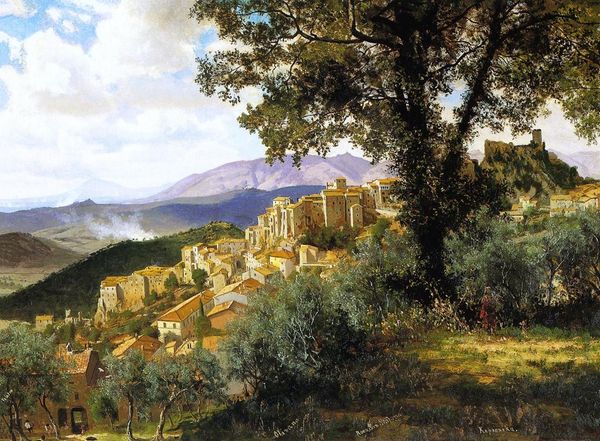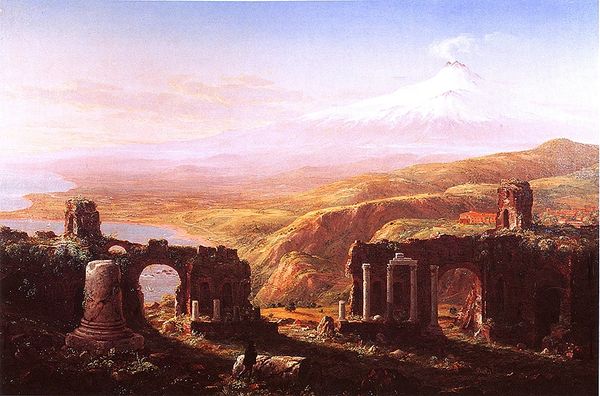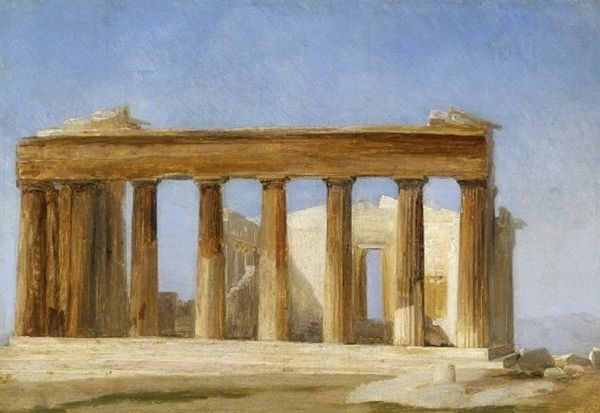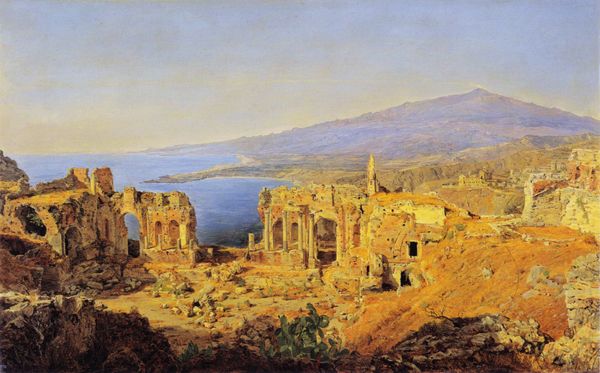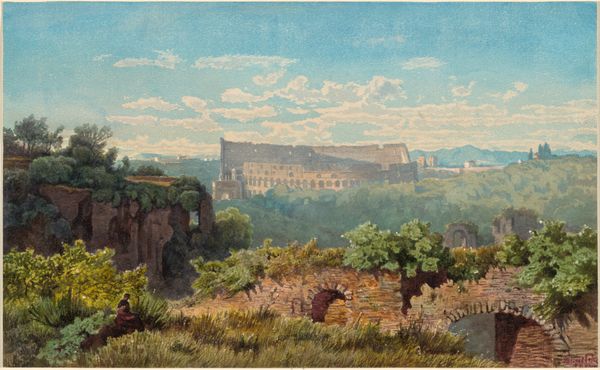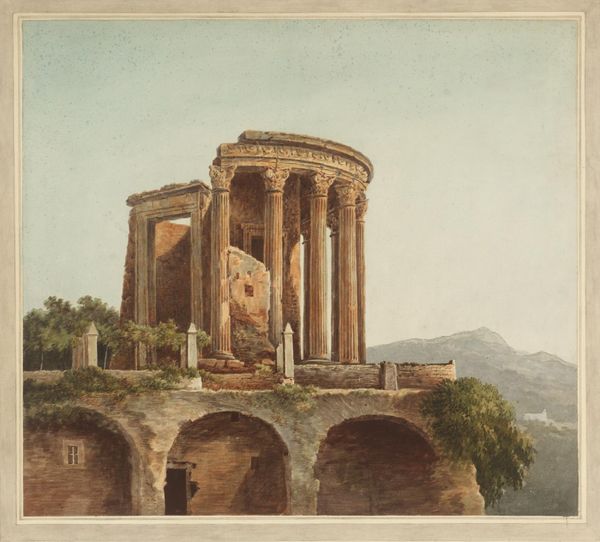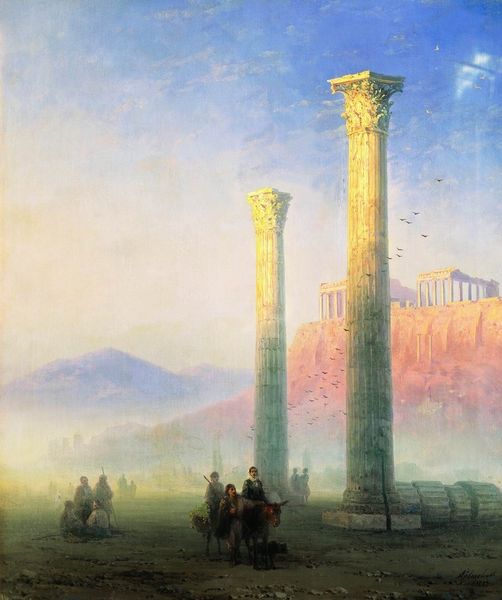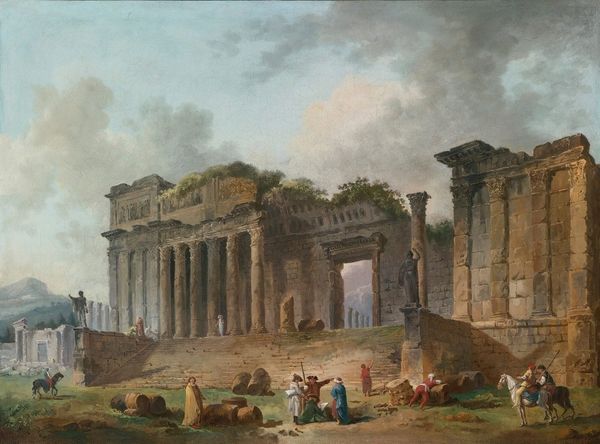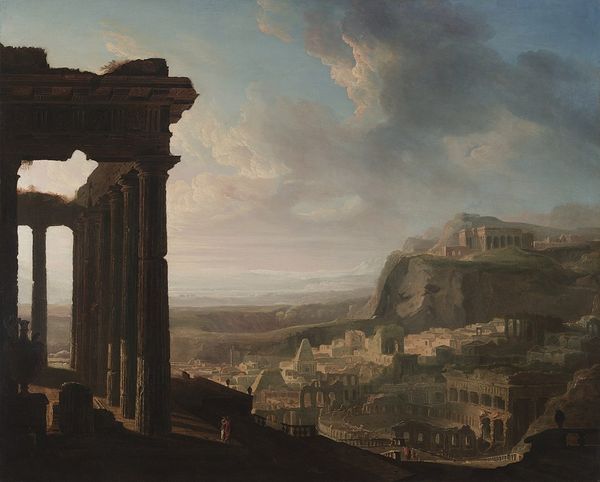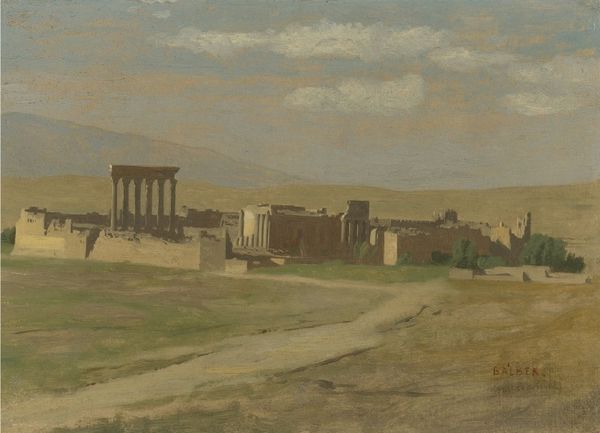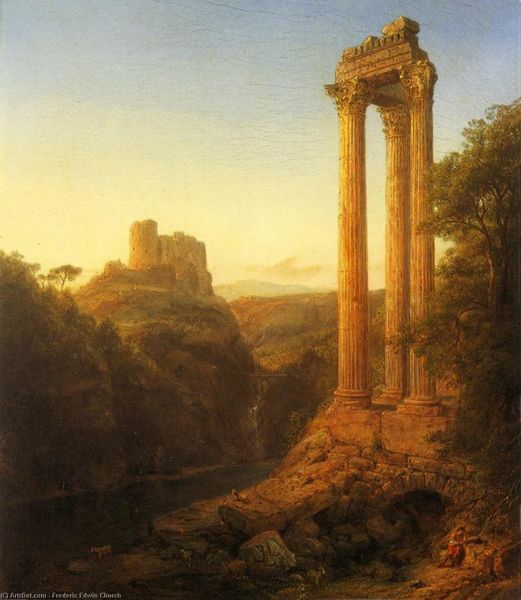
tempera, painting, oil-paint
#
tree
#
tempera
#
neoclassicism
#
painting
#
oil-paint
#
greek-and-roman-art
#
landscape
#
perspective
#
oil painting
#
natural-landscape
#
cityscape
#
history-painting
#
academic-art
#
watercolor
#
realism
Copyright: Public domain
Curator: Good morning. Here we have Ferdinand Georg Waldmüller's “Ruins of the Temple of Juno at Girgenti Lancinia,” created in 1845 using tempera and oil paint. Editor: What immediately strikes me is its almost dreamlike quality. The light, the faded gold tones—it feels both serene and slightly melancholy. It's not the grand, imposing ruin I might expect. Curator: Note how Waldmüller employs perspective. He guides the eye deliberately from the foreground, with those earthy rocks, upward through the grove, leading to the ruined temple in the background. This is a carefully constructed visual journey. Editor: Yes, and the positioning of the temple is fascinating. It's there, the focal point, yet it feels so distant, so… fragile atop the landscape. It speaks to the fleeting nature of empires, doesn't it? How even the most enduring structures eventually succumb to time and nature. Consider how museums preserve these views as markers for political moments, with audiences and purposes evolving with cultural shifts. Curator: Precisely! The details invite analysis. The contrast between the solid geometric form of the temple, what remains of it, and the organic, almost chaotic growth of the trees and bushes is stark. It establishes a binary of human construction versus the power of the natural world. The columns stand tall against their leafy context. Editor: It certainly makes me consider what it meant to represent such classical imagery during Waldmüller’s era. Were they hoping to evoke a connection to that golden age, or perhaps highlight the contrast between past glory and present circumstances within a specific ideological project? It seems significant he situated the temple not in isolation but as a small architectural flourish amid organic chaos. Curator: Indeed, it prompts speculation about cultural identity and appropriation as well. Perhaps this particular perspective—one that emphasizes not domination of structures by human endeavor, but its incorporation into and slow reclaiming by a grander narrative—held ideological resonance for his time. Editor: Viewing this painting really makes me think differently about classical representations of the past and our present connection to them. Curator: For me, it offers a quiet contemplation on how simple compositional strategies can trigger broader inquiries into art historical conversations.
Comments
No comments
Be the first to comment and join the conversation on the ultimate creative platform.
